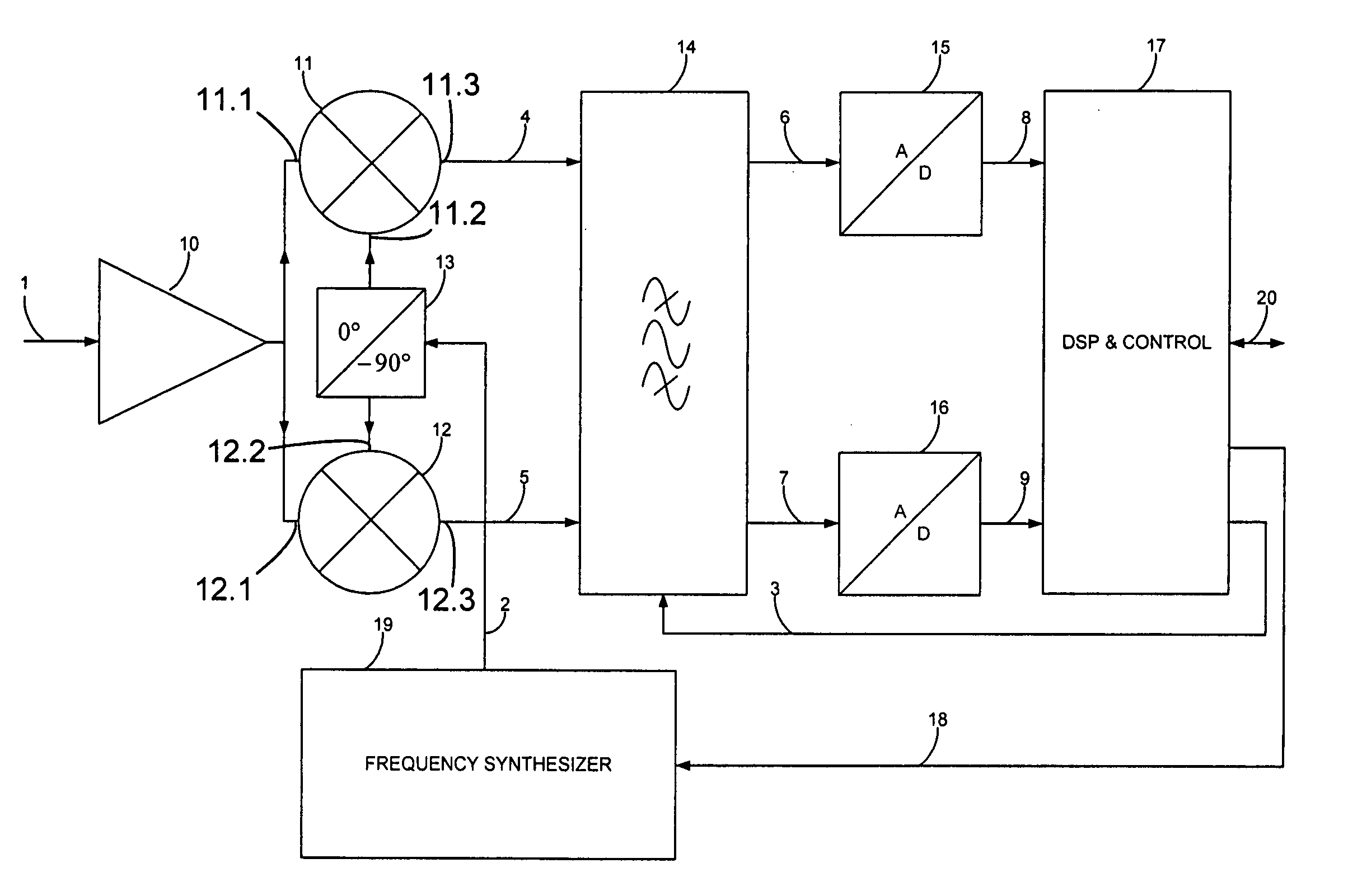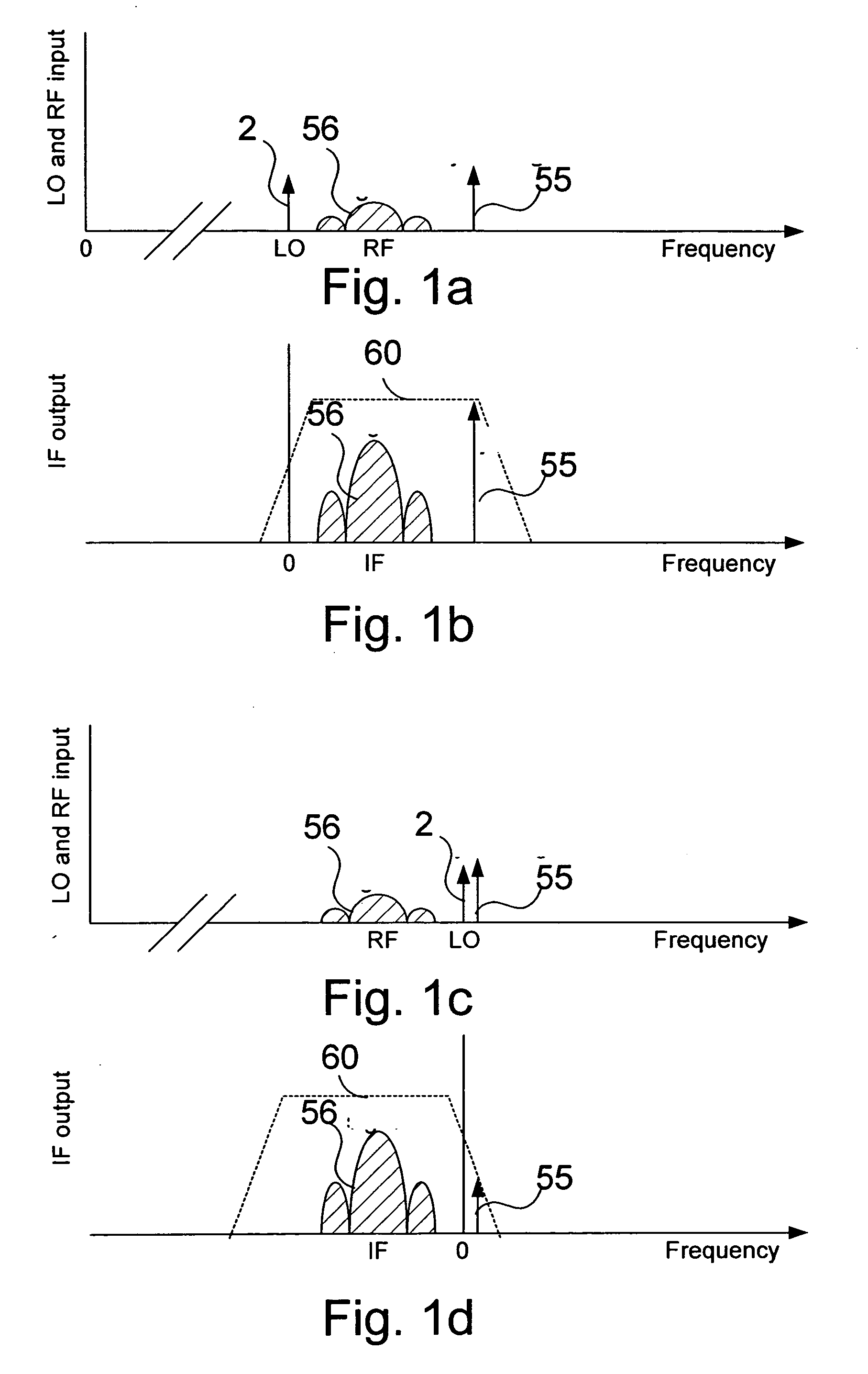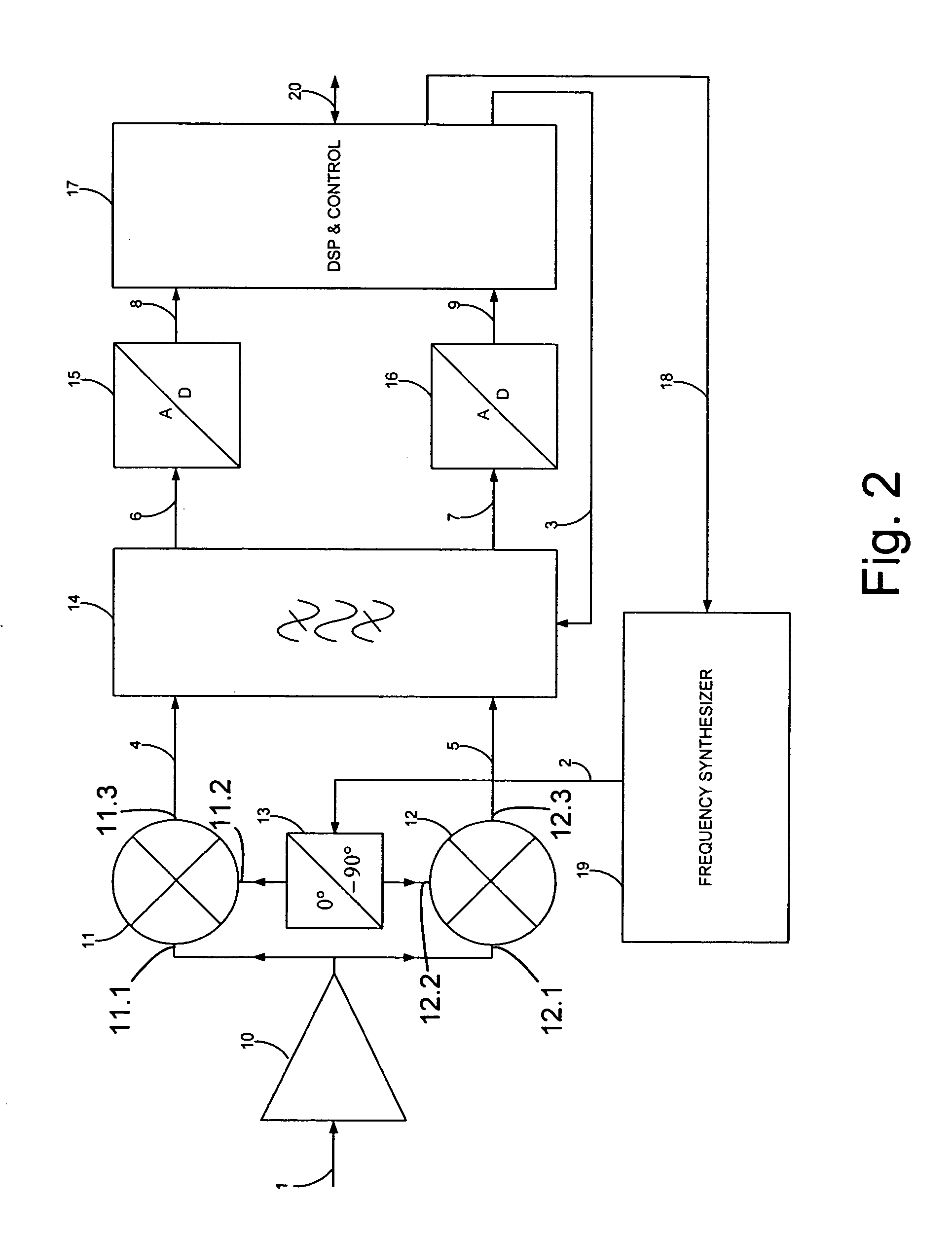Filtering signals
- Summary
- Abstract
- Description
- Claims
- Application Information
AI Technical Summary
Benefits of technology
Problems solved by technology
Method used
Image
Examples
Embodiment Construction
[0040] In the following, the present invention will be described in more detail husing the electronic device 50 of FIG. 5 as an example. The electronic device 50 comprises a receiver 51 in which a filter 14 according to an embodiment of the present invention is utilized. The details of the receiver 51 and the filter 14 are depicted in FIGS. 2, 3, 4a and 4b.
[0041] Radio frequency signals are received by an antenna 52 and led to the input 1 (the front-end) of the receiver 51 through a bandpass filter 53 (FIG. 5). The bandpass filter 53 is used to filter out signals which are outside the frequency band of the wanted signals. However, the bandwidth of the filter is broader than the bandwidth of the actual signals as was already mentioned above in the description. Referring now to FIG. 2, the received signals passed through the antenna coupler 53 are amplified by the low noise high frequency amplifier 10. After that, the amplified signals are directed to a first input 11.1 of a first mi...
PUM
 Login to View More
Login to View More Abstract
Description
Claims
Application Information
 Login to View More
Login to View More - R&D
- Intellectual Property
- Life Sciences
- Materials
- Tech Scout
- Unparalleled Data Quality
- Higher Quality Content
- 60% Fewer Hallucinations
Browse by: Latest US Patents, China's latest patents, Technical Efficacy Thesaurus, Application Domain, Technology Topic, Popular Technical Reports.
© 2025 PatSnap. All rights reserved.Legal|Privacy policy|Modern Slavery Act Transparency Statement|Sitemap|About US| Contact US: help@patsnap.com



